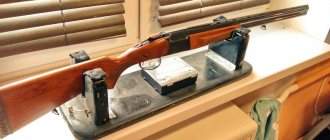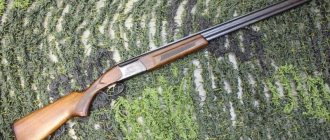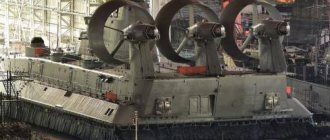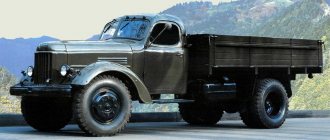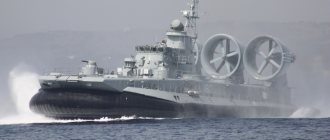MQ-9 Reaper purchased for the French Air Force.
Unmanned aerial vehicles, capable of delivering precise strikes against ground and air targets, are considered today one of the most effective means of warfare. The United States has achieved the greatest success in the development and mass production of these machines. The main attack drone in service with the US Army today is the MQ-9 Reaper, created by General Atomic. This drone will remain in service until at least 2030, when it may be replaced by a more advanced aircraft. However, the command of the US Air Force has still not even indicated an approximate date for the tender, during which projects of new attack drones will be evaluated. For now, the MQ-9 simply has no obvious rivals, although, of course, this car cannot be called ideal.
Development history
Attempts to install various types of weapons on unmanned aerial vehicles were carried out throughout the second half of the twentieth century. In particular, in 1971, the world's first launch of an air-to-ground guided missile from a UAV was carried out at a test site in the United States. It was the BGM-34 Firebee, a drone developed back in the early 50s, originally used as a flying target. Previously, the same vehicle was experimentally armed with air-to-air missiles.
The achieved successes did not receive any noticeable development, which was due to a variety of circumstances. This situation changed only after a large-scale terrorist attack occurred in New York on September 11, 2001, the organizer of which, according to US intelligence services, was Osama Bin Laden. It should be noted that at the end of 2000, American MQ-1 Predator UAVs flew over Afghanistan, where the headquarters of “terrorist No. 1” were located.
The immediate predecessor of the Reaper is the MQ-1 Predator.
The original purpose of these vehicles was reconnaissance. In concept, they were noticeably different from older drones such as the Firebee. The designers of General Atomic did not strive to make the Predator fast and powerful. On the contrary, it was conceived as light, quiet and almost unnoticeable, capable of “hanging” in the air for many hours, controlling everything that happens in a given area of the terrain.
In 1998, the creators of the Predator UAV, on their own initiative, began work on creating a special enlarged version of this drone. The main goal was to increase the load capacity and speed of the machine. To do this, it was necessary not only to increase the wing area by lengthening it, but also to install a new, more powerful engine. For some reason, this project received partial funding from NASA (but not from the Pentagon).
The enlarged drone was supposed to be called Predator B. Initially, it did not have any weapons on board, moreover, even such a possibility was not considered. However, by February 2001, when the new machine made its first flight, much had changed significantly.
In the summer of 2000, test launches of AGM-114 Hellfire guided missiles took place from the “regular” MQ-1 Predator. These tests were carried out for a very specific purpose - at a training ground in Nevada, an exact copy of the house was built in which Bin Laden, who was already considered one of the main enemies of the United States, was supposed to live. Upon learning of the results of these test launches, the head of the CIA counterterrorism center, Cofer Black, immediately became an ardent supporter of installing weapons on all Predators available at that time. In addition, he insisted on using updated drones directly against Bin Laden back in the winter of 2000-2001.
Launch of an AGM-114 Hellfire missile from an MQ-9 Reaper UAV.
Despite all Black's efforts, the necessary permission was not obtained until the terrorist attack in New York; the Predators remained ordinary intelligence officers. The tragedy of September 11, 2001 changed this situation dramatically. The successes then achieved by the strike version of the MQ-1 turned out to be so significant that it also influenced the future fate of the Predator-B UAV.
Before the end of 2001, the US Air Force signed a contract with General Atomic for the supply of two test copies of the “enlarged Predator”. The military was attracted primarily by the large carrying capacity of the new drone, which made it possible to expand the arsenal of on-board weapons. After practical tests took place in 2002, the UAV received a new name MQ-9 Reaper (“Reaper”) - an ominous allusion to the Grim Reaper, the “personification of death”, a gloomy figure in a black robe and a scythe in his bony hands.
The Reaper was officially adopted by the US Army only in 2007, but these drones have been used quite actively before. In particular, they carried out flights over the territory of Iraq, where American troops invaded in 2002. True, the number of such devices then remained extremely small - no more than seven copies.
The first flying unit to completely replace manned strike aircraft with MQ-9 Reaper UAVs was the 174th "Attack Wing" of the US Air National Guard, which previously used F-16 fighters. The number of “reapers” constantly increased, reaching 195 units by 2016.
MQ-9 Reaper ER is one of the latest modifications of the UAV.
Throughout its “biography,” the MQ-9 Reaper has been constantly modernized. First of all, the software of the on-board equipment was updated, but more labor-intensive alterations and improvements were also carried out. In particular, in 2016, the first test flight of the MQ-9/ER was carried out with an enlarged wing, which once again made it possible to increase the vehicle’s carrying capacity and extend its autonomous flight. In addition, significant attention was paid to expanding the range of weapons installed on board the drone.
In addition to the United States, the MQ-9 Reaper drone is operated in the UK, France, Spain, Turkey and Italy. Some machines were also used by Australia and the Dominican Republic. Deliveries of “Reapers” are planned to the Netherlands, Germany, Belgium, India and Taiwan.
Notes
- [archive.is/20120629221356/www.af.mil/information/factsheets/factsheet.asp?fsID=6405 MQ-9 REAPER on the US Air Force website]
- ↑ 12
[costofwar.com/en/publications/2011/analysis-fiscal-year-2012-pentagon-spending-request/ Analysis of the Fiscal Year 2012 Pentagon Spending Request | COSTOFWAR.COM] - ↑ 12
Error in footnotes: Invalid tag ; no text specified for autogenerated1 footnotes - [lenta.ru/news/2008/07/24/reaper/ The Americans deployed unmanned Reapers in Iraq]
- ↑ 12
[lenta.ru/news/2010/07/19/shadow/ Italy bought American reconnaissance drones] - [lenta.ru/news/2010/09/10/reaper/ US Air Force ordered six Reaper drones]
- [lenta.ru/news/2011/02/04/reaper/ US Air Force bought 24 Reaper drones]
- [lenta.ru/news/2015/02/06/reaper/ The Pentagon bought 24 Reaper drones]
- [lenta.ru/news/2012/04/19/retrofit/ Americans will increase the flight duration of Reaper drones]
- [lenta.ru/news/2012/09/07/reaper/ The United States will improve the Reaper attack drone]
- [lignesdedefense.blogs.ouest-france.fr/archive/2015/09/17/le-reaper-capable-de-voler-33-heures-14696.html “Extension du domaine de la lutte”: le Reaper est désormais capable de voler 33 heures]
- [www.nytimes.com/2009/03/17/business/17uav.html?hp Drones Are Weapons of Choice in Fighting Qaeda], New York Times
(March 16, 2009). Retrieved March 17, 2009. "Considered a novelty a few years ago, the Air Force's fleet has grown to 195 Predators and 28 Reapers, a new and more heavily armed cousin of the Predator." - ↑ 123
[www.lenta.ru/news/2008/08/11/reaper/ The US Air Force rearmed the first combat air unit with drones, lenta.ru, 08/11/2008] - For example, the devices in Afghanistan are controlled remotely by operators located at Creech Air Force Base in Nevada.
- Ryan Whitney
. [www.af.mil/news/story.asp?id=123051728 Air Force stands up first unmanned aircraft systems wing], 99th Air Base Wing Public Affairs (May 3, 2007). [archive.is/Y1Cq Archived] from the original source on July 28, 2012. - Brook, Tom Vanden, “Air Force Requests More Fighter Drones,” USA Today
, 6 March 2008, p. 6. - Jason Straziuso
. [www.freep.com/article/20091024/NEWS07/910240315/1001/news/To-fight-pirates—military-will-send-in-the-drones To fight pirates, military will send in the drones], Associated Press (October 24, 2009). Retrieved October 30, 2009. - [www.bbc.co.uk/russian/international/2010/06/100531_al_quaeda_leader_killed.shtml BBC: “One of the leaders of al-Qaeda was killed in Afghanistan”]
- [l[lenta.ru/news/2012/05/07/alquso/ Lenta.ru: World: The leader of Yemen's al-Qaeda was destroyed]/li>
- [w[www.reuters.com/article/us-yemen-security-alqaeda-idUSKCN11S1EM Local Yemeni al Qaeda leader killed in US drone strike: official] Reuters
(September 22, 2016). Retrieved September 24, 2016. - [k[korrespondent.net/world/588264 An unmanned aircraft fired at a Pakistani village: there are casualties]li>
- [w[www.bbc.co.uk/russian/international/2010/04/100407_us_radical_warrant.shtml White House approves “capture or destruction” of militant]li>
- [l[lenta.ru/news/2011/12/13/drone1/ An American drone crashed in the Seychelles]li>
- [l[lenta.ru/news/2012/04/05/drone/ A US drone crashed again at Seychelles airport]li>
- [w[www.reuters.com/article/us-afghanistan-drones-idUSKCN0VU06S US Air Force drone crashes in southern Afghanistan]li>
- [u[uk.reuters.com/article/uk-mideast-crisis-usa-drone-idUKKCN0ZL2EA US says drone crashes in northern Syria, not shot down]li>
- ↑ 1 2 International Institute for Strategic Studies.
The Military Balance 2016 / James Hackett. - London: Taylor&Francis, 2016. - pp. 47-49. — ISBN 9781857438352. - International Institute for Strategic Studies.
The Military Balance 2016 / James Hackett. - London: Taylor&Francis, 2016. - P. 54. - ISBN 9781857438352. - International Institute for Strategic Studies.
The Military Balance 2016 / James Hackett. - London: Taylor&Francis, 2016. - P. 154. - ISBN 9781857438352. - International Institute for Strategic Studies.
The Military Balance 2016 / James Hackett. - London: Taylor&Francis, 2016. - P. 113. - ISBN 9781857438352. - [w[www.japcc.de/fileadmin/user_upload/projects/nato_flight_plan_for_uas/Flightplan_2008/03_-_2008_Flight_Plan_-_Annex_B_and_B1.pdf NATO unmanned aircraft systems operational]li>
- [w[www.armstrade.org/includes/periodics/news/2013/0701/115519130/detail.shtml TsAMTO / News / France intends to purchase the Reaper UAV - DSCA]li>
- International Institute for Strategic Studies.
The Military Balance 2016 / James Hackett. - London: Taylor&Francis, 2016. - P. 158. - ISBN 9781857438352.
UAV design
The MQ-9 Reaper is an aircraft built using a normal aerodynamic design. The wing is straight (that is, with zero sweep), of great length. The MQ-9 Reaper ER Long Wing modification has wingtips, thanks to which some improvement in the main aerodynamic characteristics has been achieved.
Visually, the Reaper differs from its predecessor, the MQ-1 Predator UAV, not only in its increased size, but also in the shape of the tail. The two fins, which are also used as stabilizers, are located in the shape of the letter V - on the Predator they were directed downwards. The layout of the main vertical stabilizer with the rudder installed on it has been retained as before.
TPE 331-10 engine installed on the MQ-9 Reaper drone.
The power plant is a Honeywell TPE 331-10 turboprop engine with a power of 700 kilowatts (940 horsepower). Other motors were also installed on early experimental modifications.
The Reaper's chassis is three-post, with one front and two rear supports. All three racks are equipped with braking systems.
When creating the MQ-9, individual elements and entire assemblies that were previously used on other aircraft were widely used. This approach simplified the design and subsequent “fine-tuning” of the drone.
On-board equipment
The Reaper uses two separate systems to find targets and navigate. One of them is the AN/APY-8 Lynx high-resolution multi-mode synthetic aperture radar. It is capable of mapping terrain, as well as identifying moving targets both against the background of the earth and on the surface of the sea. The operator, interacting with such a radar, can highlight and identify individual objects.
The second system is Raytheon AN/ASS-52(V). It is an optical-electronic sighting station capable of operating both in daylight and in the infrared range and equipped with a laser rangefinder-target designator. Such equipment makes it possible to use all precision-guided ammunition available to the US Army.
MQ-9 Reaper with open equipment bay. The satellite dish is clearly visible.
In addition, the following types of equipment can be installed on board the MQ-9 Reaper:
- Gorgon Stare (“Gorgon’s gaze”) is a sensor system, the main elements of which are nine video cameras that provide a spherical view of the entire space around the UAV. Designed for long-term viewing of large areas of terrain. From an altitude of 7,600 meters, she is able to completely control everything that happens in a small city.
- Raytheon ALR-69A RWR Threat Warning System. Placed in the internal compartment of the UAV for timely detection of the drone’s exposure to enemy radars.
- Active jamming unit developed by Raytheon. This equipment was tested in 2013, along with ADM-160 MALD decoy missiles.
- EO/IR MTS-B sensor – for detecting and tracking incoming ballistic missiles and their warheads. UAVs equipped with such equipment could interact with the ship's Aegis missile defense system, providing target designation for SM-3 interceptor missiles.
In addition, in the near future, the Reapers are expected to be equipped with an electronic automatic takeoff and landing system.
An excerpt characterizing the MQ-9 Reaper
Pierre, not understanding anything and silently, blushing shyly, looked at Princess Anna Mikhailovna. After talking with Pierre, Anna Mikhailovna went to the Rostovs and went to bed. Waking up in the morning, she told the Rostovs and all her friends the details of the death of Count Bezukhy. She said that the count died the way she wanted to die, that his end was not only touching, but also edifying; The last meeting between father and son was so touching that she could not remember him without tears, and that she does not know who behaved better in these terrible moments: the father, who remembered everything and everyone in such a way in the last minutes and such Touching words were spoken to his son, or Pierre, whom it was a pity to see how he was killed and how, despite this, he tried to hide his sadness so as not to upset his dying father. “C'est penible, mais cela fait du bien; ca eleve l'ame de voir des hommes, comme le vieux comte et son digne fils,” [[It’s hard, but it’s saving; the soul rises when you see people like the old count and his worthy son, she said. She also spoke about the actions of the princess and Prince Vasily, not approving of them, but in great secrecy and in a whisper. In Bald Mountains, the estate of Prince Nikolai Andreevich Bolkonsky, the arrival of the young Prince Andrei and the princess was expected every day; but the wait did not disrupt the orderly order in which life went on in the old prince’s house. General-in-Chief Prince Nikolai Andreevich, nicknamed in society le roi de Prusse, [[the King of Prussia,] at the time when he was exiled to the village under Paul, lived constantly in his Bald Mountains with his daughter, Princess Marya, and with her companion, m lle Bourienne. [[Mademoiselle Bourien.] into the new reign, although he was allowed entry into the capitals, he also continued to live in the countryside without a break, saying that if anyone needed him, then he would travel one and a half hundred miles from Moscow to Bald Mountains, but what would he no one or anything is needed. He said that there are only two sources of human vices: idleness and superstition, and that there are only two virtues: activity and intelligence. He himself was involved in raising his daughter and, in order to develop both main virtues in her, until she was twenty, he gave her lessons in algebra and geometry and distributed her whole life in continuous studies. He himself was constantly busy either writing his memoirs, or calculating higher mathematics, or turning snuff boxes on a machine, or working in the garden and observing the buildings that did not stop on his estate. Since the main condition for activity is order, order in his way of life was brought to the utmost degree of precision. His trips to the table took place under the same unchanging conditions, and not only at the same hour, but also at the same minute. With the people around him, from his daughter to his servants, the prince was harsh and invariably demanding, and therefore, without being cruel, he aroused fear and respect for himself, which the most cruel person could not easily achieve. Despite the fact that he was retired and now had no importance in state affairs, every head of the province where the prince’s estate was, considered it his duty to come to him and, just like an architect, gardener or Princess Marya, waited for the appointed hour of the prince's appearance in the high waiter's room. And everyone in this waitress experienced the same feeling of respect and even fear, while the enormously high door of the office opened and the short figure of an old man in a powdered wig appeared, with small dry hands and gray drooping eyebrows, which sometimes, as he frowned, obscured the shine of smart people. and definitely young, sparkling eyes. On the day of the newlyweds’ arrival, in the morning, as usual, Princess Marya entered the waitress’s room at the appointed hour for morning greetings and crossed herself with fear and read an internal prayer. Every day she went in and every day she prayed that this daily appointment would go well. A powdery old servant sitting in the waiter's room stood up with a quiet movement and announced in a whisper: "Please." The uniform sounds of the machine could be heard from behind the door. The princess timidly pulled the door that opened easily and smoothly and stopped at the entrance. The prince was working at the machine and, looking back, continued his work. The huge office was filled with things that were obviously in constant use. A large table on which lay books and plans, tall glass library cabinets with keys in the doors, a high standing writing table on which lay an open notebook, a lathe with tools laid out and shavings scattered around - everything showed a constant, varied and orderly activities. From the movements of his small foot, shod in a Tatar boot embroidered with silver, and from the firm fit of his sinewy, lean hand, one could see in the prince the stubborn and enduring strength of fresh old age. Having made several circles, he took his foot off the pedal of the machine, wiped off the chisel, threw it into a leather pocket attached to the machine, and, going up to the table, called his daughter. He never blessed his children and only, presenting his stubbled, now unshaven cheek to her, said, looking at her sternly and at the same time carefully: “Are you healthy?... well, sit down!” He took the geometry notebook he had written in his own hand and pushed his chair forward with his foot. - For tomorrow! - he said, quickly finding the page and marking it from paragraph to paragraph with a hard nail. The princess bent down on the table over her notebook. “Wait, the letter is for you,” the old man suddenly said, taking out an envelope written in a woman’s hand from a pocket attached above the table and throwing it on the table. The princess's face became covered with red spots at the sight of the letter. She hurriedly took it and bent down towards him. - From Eloise? - asked the prince, showing his still strong and yellowish teeth with a cold smile. “Yes, from Julie,” said the princess, looking timidly and smiling timidly. “I’ll miss two more letters, and I’ll read the third,” the prince said sternly, “I’m afraid you’re writing a lot of nonsense.” I'll read the third one. “At least read this, mon pere,” answered the princess, blushing even more and handing him the letter. “Third, I said, third,” the prince shouted briefly, pushing away the letter, and, leaning his elbows on the table, pulled up a notebook with geometry drawings. “Well, madam,” the old man began, bending close to his daughter over the notebook and placing one hand on the back of the chair on which the princess was sitting, so that the princess felt surrounded on all sides by that tobacco and senile pungent smell of her father, which she had known for so long. . - Well, madam, these triangles are similar; if you please see, angle abc... The princess glanced fearfully at her father’s sparkling eyes close to her; red spots shimmered across her face, and it was clear that she did not understand anything and was so afraid that fear would prevent her from understanding all her father’s further interpretations, no matter how clear they were. Whether the teacher was to blame or the student was to blame, the same thing was repeated every day: the princess’s eyes grew dim, she saw nothing, heard nothing, she only felt the dry face of her stern father close to her, felt his breath and smell and only thought about how she could quickly leave the office and understand the problem in her own open space. The old man lost his temper: he pushed and pulled back the chair on which he was sitting with a roar, made efforts to control himself so as not to get excited, and almost every time he got excited, cursed, and sometimes threw his notebook. The princess made a mistake in her answer. - Well, why not be a fool! - the prince shouted, pushing away the notebook and quickly turning away, but immediately stood up, walked around, touched the princess’s hair with his hands and sat down again. He moved closer and continued his interpretation. “It’s impossible, princess, it’s impossible,” he said when the princess, having taken and closed the notebook with the assigned lessons, was already preparing to leave, “mathematics is a great thing, my madam.” And I don’t want you to be like our stupid ladies. Will endure and fall in love. “He patted her cheek with his hand. - The nonsense will jump out of your head. She wanted to go out, he stopped her with a gesture and took out a new uncut book from the high table. - Here’s another Key of the Sacrament your Eloise sends you. Religious. And I don’t interfere with anyone’s faith... I looked through it. Take it. Well, go, go! He patted her on the shoulder and locked the door behind her. Princess Marya returned to her room with a sad, frightened expression that rarely left her and made her ugly, sickly face even more ugly, and sat down at her desk, lined with miniature portraits and littered with notebooks and books. The princess was as disorderly as her father was decent. She put down her geometry notebook and impatiently opened the letter. The letter was from the princess’s closest friend since childhood; this friend was the same Julie Karagina who was at the Rostovs’ name day: Julie wrote: “Chere et excellente amie, quelle chose terrible et effrayante que l'absence! J'ai beau me dire que la moitie de mon existence et de mon bonheur est en vous, que malgre la distance qui nous separe, nos coeurs sont unis par des liens indissolubles; le mien se revolte contre la destinee, et je ne puis, malgre les plaisirs et les distractions qui m'entourent, vaincre une certaine tristesse cachee que je ressens au fond du coeur depuis notre separation. Pourquoi ne sommes nous pas reunies, comme cet ete dans votre grand cabinet sur le canape bleu, le canape a confidences? Pourquoi ne puis je, comme il ya trois mois, puiser de nouvelles forces morales dans votre regard si doux, si calme et si penetrant, regard que j'aimais tant et que je crois voir devant moi, quand je vous ecris.” [[Dear and priceless friend, what a terrible and terrible thing is separation! No matter how much I tell myself that half of my existence and my happiness lies in you, that, despite the distance that separates us, our hearts are united by inextricable bonds, my heart rebels against fate, and, despite the pleasures and distractions that surround me, I I cannot suppress some hidden sadness that I have been experiencing in the depths of my heart since our separation. Why aren’t we together, like last summer, in your big office, on the blue sofa, on the sofa of “confessions”? Why can’t I, like three months ago, draw new moral strength from your gaze, meek, calm and penetrating, which I loved so much and which I see before me at the moment I write to you?] even to this point, princess Marya sighed and looked back at the dressing table, which stood to her right. The mirror reflected an ugly, weak body and a thin face. The eyes, always sad, now looked at themselves in the mirror especially hopelessly. “She flatters me,” thought the princess, turned away and continued reading. Julie, however, did not flatter her friend: indeed, the princess’s eyes, large, deep and radiant (as if rays of warm light sometimes came out of them in sheaves), were so beautiful that very often, despite the ugliness of her whole face, these eyes became more attractive than beauty. But the princess had never seen a good expression in her eyes, the expression they took on in those moments when she was not thinking about herself. Like all people, her face took on a tense, unnatural, bad expression as soon as she looked in the mirror. She continued to read: 211 “Tout Moscou ne parle que guerre. L'un de mes deux freres est deja a l'etranger, l'autre est avec la garde, qui se met en Marieche vers la frontiere. Notre cher empereur a quitte Petersbourg et, a ce qu'on pretend, compte lui meme exposer sa precieuse existence aux chances de la guerre. Du veuille que le monstre corsicain, qui detruit le repos de l'Europe, soit terrasse par l'ange que le Tout Puissant, dans Sa misericorde, nous a donnee pour souverain. Sans parler de mes freres, cette guerre m'a privee d'une relation des plus cheres a mon coeur. Je parle du jeune Nicolas Rostoff, qui avec son enthousiasme n'a pu supporter l'inaction et a quitte l'universite pour aller s'enroler dans l'armee. Eh bien, chere Marieie, je vous avouerai, que, malgre son extreme jeunesse, son depart pour l'armee a ete un grand chagrin pour moi. Le jeune homme, dont je vous parlais cet ete, a tant de noblesse, de veritable jeunesse qu'on rencontre si rarement dans le siecle ou nous vivons parmi nos villards de vingt ans. Il a surtout tant de franchise et de coeur. Il est tellement pur et poetique, que mes relations avec lui, quelque passageres qu'elles fussent, ont ete l'une des plus douees jouissances de mon pauvre coeur, qui a deja tant souffert. Je vous raconterai un jour nos adieux et tout ce qui s'est dit en partant. Tout cela est encore trop frais. Ah! Chere amie, vous etes heureuse de ne pas connaitre ces jouissances et ces peines si poignantes. Vous etes heureuse, puisque les derienieres sont ordinairement les plus fortes! Je sais fort bien, que le comte Nicolas est trop jeune pour pouvoir jamais devenir pour moi quelque chose de plus qu'un ami, mais cette douee amitie, ces relations si poetiques et si pures ont ete un besoin pour mon coeur. Mais n'en parlons plus. La grande nouvelle du jour qui occupe tout Moscou est la mort du vieux comte Earless et son heritage. Figurez vous que les trois princesses n'ont recu que tres peu de chose, le prince Basile rien, est que c'est M. Pierre qui a tout herite, et qui par dessus le Marieche a ete reconnu pour fils legitime, par consequent comte Earless est possesseur de la plus belle fortune de la Russie. On pretend que le prince Basile a joue un tres vilain role dans toute cette histoire et qu'il est reparti tout penaud pour Petersbourg.
Armament
The MQ-9 Reaper unmanned aerial vehicle has seven hardpoints. One of them is in the center, directly under the fuselage, and the other six are under the wings, three on each side. On the latest modifications of the Reaper, the number of suspension points has been increased to nine.
MQ-9 UAV with a "typical" set of weapons under the wings.
The central ventral assembly is used to mount various types of target equipment (for example, a jamming unit). The remaining points are intended to accommodate various types of weapons:
- AGM-114 Hellfire. This is essentially the "main caliber" of the MQ-9. In the standard load version, the Reaper is armed with four such missiles mounted on the middle points of the suspension. The maximum load is (on the latest modifications) 12 or even 14 missiles. All variants of AGM-114 can be used.
- Brimstone. A dual-mode small-sized guided missile, created in Britain on the basis of the AGM-114. The drone is capable of carrying up to eighteen such ammunition.
- Adjustable aerial bombs weighing up to 230 kg. Attaches only to internal suspension points. All variants of JDAM bombs of the appropriate weight can be used, as well as, for example, the GBU-12 Paveway II.
- AIM-9 Sidewinder and AIM-92 Stinger guided air-to-air missiles. Can be installed on external suspension points.
The standard set of weapons is two adjustable bombs and four AGM-114 Hellfire. On-board equipment allows you to track up to 12 targets simultaneously, firing missiles at them in a “pulse” mode - every 0.32 seconds.
Control system
The “crew” of the MQ-9 Reaper, located at the ground station, consists of two people - a pilot and an avionics operator. They may also be assisted by a coordinator when carrying out reconnaissance missions. Signals are transmitted via satellite, making it possible to control Reaper flights passing somewhere over Syria directly from the Pentagon or CIA headquarters.
The “crew” of an attack UAV at work.
Main modifications
The first UAV variant to be mass produced was the MQ-9A. Then the following modifications of the drone appeared:
- MQ-9 Block 1. First demonstrated in the spring of 2012. This UAV was distinguished by a reinforced chassis and the presence of additional fuel tanks. Flight duration has been increased to 37 hours.
- MQ-9 Block 5. It is the result of further improvement of the Block 1 modification. The drone was equipped with a more powerful engine, a second radio station was installed, and measures were taken to strengthen the protection of communication channels.
- MQ-9 Reaper ER. This modification differs from the basic one in the noticeably increased length of the wing, equipped with upward-curved tips. Continuous flight duration increased to 43 hours.
- MQ-9 Mariner. Designed for the US Navy and capable of taking off from an aircraft carrier. The landing gear was made stronger and shorter, a hook for the landing cable was added, and the wings were made folding. It has a record long flight duration - up to 49 hours.
- MQ-9 Guardians. Modification developed for the US Customs and Border Protection Service. Works in the Coast Guard.
In addition, in the near future, Britain will receive several MQ-9 UAVs in a special Protector modification. His main weapon will be Brimstone missiles.
Main advantages
Compared to manned multi-role military aircraft, the drone wins according to the following criteria:
- The military operator is in a safe place. This allows you to retain personnel. If necessary, operators can work in shifts during long flights of the device.
- The cost of the UAV and its maintenance are much lower than the F-16.
- The duration of the MQ-9 in the air is sufficient to complete any assigned tasks.
- Compared to cruise missiles, which can be used once, drones are reusable strike systems. In terms of firepower, they are not inferior to missile weapons. But their functionality is broader due to the fact that aerial photography and reconnaissance operations are available to them.
Performance characteristics
| UAV length | 11 m |
| Wingspan | 20 m |
| Height | 3.81 m |
| UAV weight without fuel and weapons | 2,223 tons |
| Maximum take-off weight | 4.76 tons |
| Fuel reserve | 1.8 tons |
| Payload | 1.7 tons |
| Maximum speed | 482 km/h |
| Cruising speed | 313 km/h |
| Flight duration | 14 hours at full load |
| Maximum flight range | 1,900 km |
| Service ceiling | 15,420 m |
| Operational ceiling | 7,500 m |
MQ-9 Reaper maintenance.
The MQ-9 Reaper can carry 360 kg in its internal compartments, and another 1,400 kg on its external hardpoints. The dimensions of the UAV are given for its initial modification - MQ-9A.
Incidents
| date | Board number | Place | Victims | Description |
| 13.12.2011 | n/a | Seychelles Seychelles, Mahe Island Airport | 0/0 | The UAV crashed during landing, the incident resulted in no casualties.[2[23]td> |
| 05.04.2012 | n/a | Seychelles Seychelles, Mahe Island Airport | 0/0 | The UAV crashed during landing, the incident resulted in no casualties.[2[24]td> |
| 20.02.2016 | n/a | Afghanistan, Kandahar Province | 0/0 | The UAV crashed during landing, there were no casualties[2[25]td> |
| 05.07.2016 | n/a | Syria Syria | 0/0 | The UAV was destroyed by a coalition aircraft, the incident resulted in no casualties.[2[26]td> |
Practical use
The Reapers made their first official combat missions over Iraq and Afghanistan in the summer of 2007. A few months later, at the end of October, the MQ-9 attacked fortifications built by the Taliban with Hellfire missiles - in fact, this episode became a “baptism of fire” for the new drone. Starting on July 17 of the following year, 2008, the Balad airbase became the base for the “reapers” in Iraq.
Several MQ-9 UAVs were sent to the Seychelles in the early fall of 2009. They were tasked with controlling part of the Indian Ocean and countering pirate attacks.
In September 2009, the Reaper was shot down for the first time during a combat mission. It was destroyed by an American F-15E Strike Eagle fighter using a Sidewinder missile. The reason was the loss of control during the flight - the uncontrolled drone was rapidly approaching the border and could subsequently enter the territory of Tajikistan. Having assessed the situation, the command gave the order to shoot down the UAV.
It should be noted that in the first years of their service, the Reapers performed mainly observation and reconnaissance missions. They operated in Ethiopia, flying over Somalia, and also in Libya, where the American ambassador was killed in 2012.
The wreckage of an MQ-9 Reaper shot down by Yemeni rebels near the city of Hodeidah.
The year 2015 was extremely unsuccessful for the MQ-9 Reaper, when at least 20 of these drones crashed to the ground due to various technical malfunctions. The investigation showed that in all cases it was a breakdown of the starter-generator, but the exact reasons for this could not be established.
Quite often, “reapers” were used to destroy specific people - most often the leaders of various armed groups in conflict with the United States of America or its allies. The victims of these UAVs included Mohammed Emwazi (aka “Jihadi John”), as well as Soleimani, the deputy commander of Iran’s mobilization forces. The latter incident almost provoked a large-scale war in the Persian Gulf. Fortunately, Iran limited itself to demonstrative rocket attacks on American bases in Iraq, and US leaders, in turn, did not further escalate violence.
Several Reapers were shot down by anti-aircraft missiles during their combat missions. At least two such drones destroyed Syrian air defenses in the summer of 2022, and another fell victim to the Pantsir air defense system while flying over Libya (this drone belonged to the Italian Air Force). In addition, the MQ-9 Reaper was shot down twice by the Houthis, the rebels fighting in Yemen against a coalition of states led by Saudi Arabia. It is noteworthy that the origin of the missiles used by the Houthis could not be established. According to some sources, we are talking about some kind of Iranian air defense system, and according to others, about a makeshift modification of the Soviet R-27 air-to-air missile.
The site of the death of Soleimani, the Iranian military commander killed by an MQ-9 Reaper strike.
To assess the intensity of the use of “Reapers,” it can be noted that drones of this model, which belonged to the Royal Air Force of Great Britain in the period from September 2015 to January 2016, carried out more than a thousand combat sorties over Syrian territory - not to mention the much more numerous American drones.
Successful startup of retired lieutenants
Israel was driven to create the first drones by necessity. In 1969, neighbors declared a war of destruction on the small and still fragile country. In the first days of the conflict, Israeli aviation suffered serious losses - Soviet anti-aircraft missile systems, which were in service with Arab countries, worked “excellently.” The desperate situation forced an urgent search for a solution. I had to open the “little box” and look into the “US military store” - this is how Firebee radio-controlled drones appeared in the Israeli Defense Forces (IDF) air squad. The bulky and clumsy one and a half ton trucks still helped in the fight against Arab air defense. However, by the beginning of the 1970s, the machines were already clearly outdated. But the generals and the Israeli leadership had no idea where to get the new product: partners from the USA and Great Britain were in no hurry to sell anything newer.
Firebee radio controlled drone.
Reference
The situation was changed by two young officers - Yehuda Mazi and Alvin Ellis. In the past, operators of those same Firebees, they studied every cog of overseas drones. Already in 1974, they created and “rolled out” a prototype of the future legendary “Mastiff”.
However, the Israeli Air Force received the new product coldly, but the military signalmen liked the Mastiff - it was able to look beyond the horizon.
Soon, the country's leading aircraft manufacturer, Israel Aircraft Industries (IAI), changed its attitude towards promising technology. The young company, which by that time had created another drone called Scout, was taken under its wing. It was then that the drones of yesterday’s retired lieutenants Mazi and Ellis received a powerful financial boost.
Israeli drone Scout.
Reference
The Scouts and Mastiffs' debut turned into an unexpected triumph during Operation Artsav, the 1982 Lebanon War. A pair of Israeli UAVs helped turn 19 of the 24 Lebanese-Syrian anti-aircraft missile systems divisions into a pile of scrap metal. The enemy's air defense system was knocked out. Then the IDF took over the matter. As a result: 90 planes shot down in just four days. And not a single loss.
However, Israel was able to gain a foothold among the leaders in the world of unmanned aircraft only in 2004. Then information leaked to the network that the Promised Land had begun developing a new attack UAV named “Eitan”.
